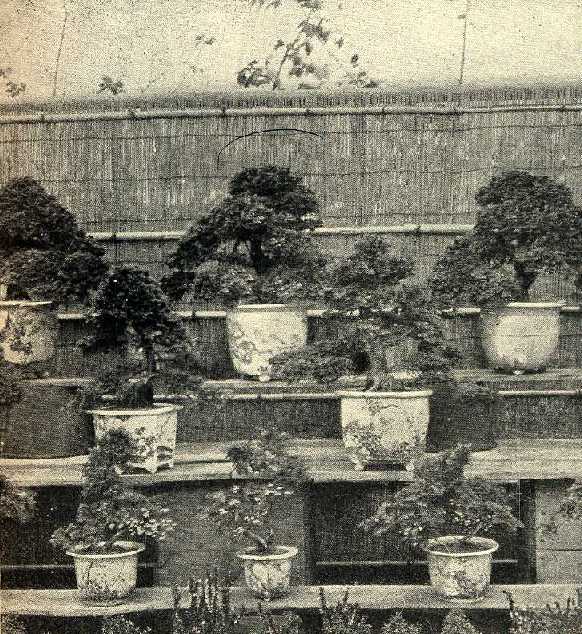| In Beautiful Japan, A Story of Bamboo Lands (1904):
The Kōyō-Kwan (Tinted-Maple
House) on the heights beyond Shiba is the most noted restaurant in
Tōkyō, a resort of princes and nobles when they wish to give
banquets. By invitation of a Japanese lawyer, we had dinner there
-- a dinner, a complete example of a native feast...
The most
interesting month of winter is January. The New Year festival is
officially observed, and every house has the pine and bamboo for
exterior decorations, while flowering plum-trees, single or double
blossomed, white or pink, trained into all sorts of odd shapes in blue
porcelain pots or wooden boxes, make pretty the interior of each little
home. The pine, being an evergreen, is a symbol of
longevity. The bamboo is also an evergreen and represents length
of life; the stalk has many joints, and the spaces between them are
called yo, signifying age. It therefore "joins many ages in
itself." The plum is a symbol of courage, strength, and virtue.
(pg. 172-173) 1 |
